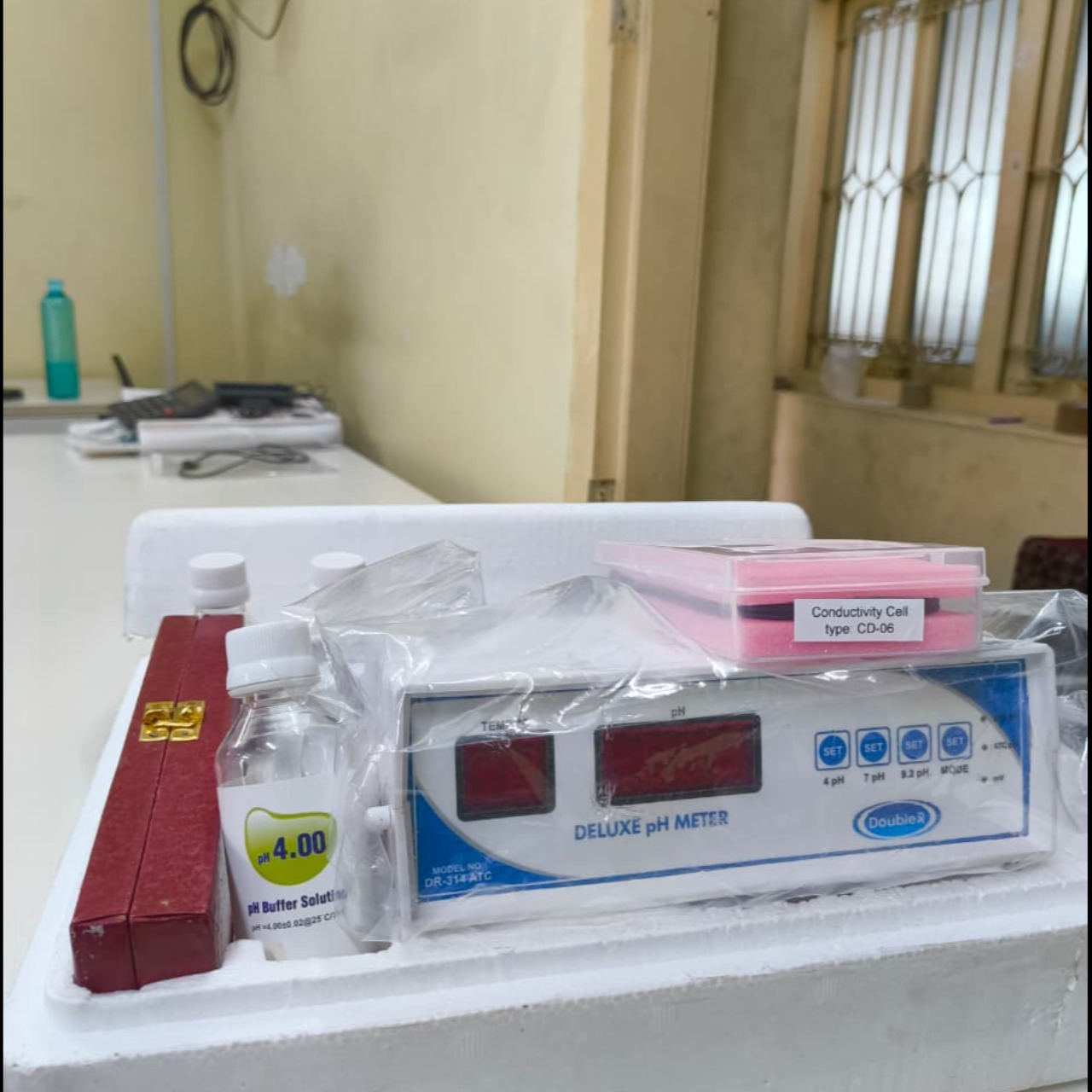
2025-10-17T09:35:20
A pH meter is an electronic instrument used to measure the acidity or alkalinity of a solution on a scale of 0 to 14, with 7 being neutral. It works by measuring the hydrogen ion activity with a probe (or electrode) and converting the resulting electrical potential difference into a pH value displayed on a screen. These are used in labs, agriculture, water treatment, and other industries where precise chemical balance is important. How it works Calibration: The meter is first calibrated using standard buffer solutions to ensure accuracy. Measurement: The probe is submerged in the solution to be tested. Voltage generation: Hydrogen ions in the solution interact with the glass electrode, creating a voltage difference. Conversion and display: The meter reads this voltage, converts it using a formula (like pH=−log10[H+]p cap H equals negative log base 10 of open bracket cap H raised to the positive power close bracket����=−log10[��+]), and displays the result. Applications Scientific and laboratory work: Accurate pH measurement is essential for many chemical and biological experiments and quality control processes. Agriculture and hydroponics: Used to test soil and water to optimize nutrient uptake for plants. Water treatment: Ensures water is within the correct pH range for safety and environmental regulations. Food and beverage production: Used to check the pH of products like beer, wine, and other foods for consistency and quality. Environmental monitoring: Measuring pH in rainwater, wastewater, and other environmental samples.

Have a question? Ask here!
Required fields are marked *